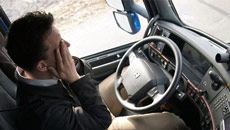If you hear slamming of doors, fireworks and gunshots or such abrupt loud noises while sleeping you are not alone as researchers found that 'exploding head syndrome', a sleeping disorder, is more prevalent than presumed, especially among women.
The syndrome is more common in women than men, said Brian Sharpless, an assistant professor at Washington State University.
While most people with “exploding head syndrome” hear an abrupt loud outbursts, some hear the explosion in one ear, some in both ears, and some within their heads.
You may also have the syndrome if you see what looks like lightning or bright flashes.
While not much is yet known why some people suffer from this sleeping disorder, it likely “occurs when the body does not shut down for sleep in the correct sequence”, Sharpless added.
Behavioural and psychological factors may also play a role and if disrupted sleep is what you experience normally, the episodes are likely to occur more.
"Some people start to become anxious when they go into their bedroom or when they try to go to sleep," he noted.
"Daytime sleepiness can be another problem for people," Sharpless added.
The term "exploding head syndrome" dates to a 1988 article in Lancet but it was described clinically as "snapping of the brain" in 1920.
Silas Weir Mitchell, an American physician, wrote in 1876 of two men who experienced explosive-sounding "sensory discharges".
While the syndrome is recognised in the International Classification of Sleep Disorders, studies using electroencephalogram recordings have only documented the disruptions in periods of relaxed but awake drowsiness.
Some medical treatments are available for it, but one possible intervention can be simply reassuring a patient that it is not a dangerous condition.
The study that reviewed the scientific literature on the disorder appeared in the journal Sleep Medicine Reviews.





